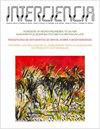具有指数衰减核的Caputo-Fabrizio算子意义下混沌系统的数值方法
IF 0.4
4区 综合性期刊
Q4 ECOLOGY
引用次数: 0
摘要
在本文中,我们提出了一种新的数值格式的模型,涉及新的数学概念,对解释和检查现实世界的问题有重要意义。本文提出了一种求解混沌问题的数值方法。利用Caputo-Fabrizio意义上的微分和积分算子,研究了能够捕捉混沌行为的数学方程混沌系统。利用非奇异核分数算子,得到了分数阶混沌模型的解。利用不动点理论证明了解的唯一性和有界性。最后,我们应用数值幂级数方法来求解所提出的分数阶模型。由于问题的高度非线性,我们采用了合适的数值格式对方程组进行数值求解。本文章由计算机程序翻译,如有差异,请以英文原文为准。
Numerical method for chaotic system in sense of Caputo-Fabrizio operator with exponential decay kernel
In this paper, we present a novel numerical scheme for a model involving novel mathematical concepts of significant importance for interpreting and examining real-world problems. This paper presents a numerical method for chaotic problems. Using differential and integral operators in the sense of Caputo-Fabrizio, we investigated the chaotic system of mathematical equations able to capture chaotic behaviour. Solutions are obtained for the fractional-order chaotic model using a fractional operator with a non-singular kernel. Uniqueness and boundedness for solution are proved through fixed point theory. Finally, we applied a numerical power series method to solve the proposed fractional model. Due to the high non-linearity of our problem, we used a suitable numerical scheme to solve this system of equations numerically.
求助全文
通过发布文献求助,成功后即可免费获取论文全文。
去求助
来源期刊

Interciencia
综合性期刊-生态学
CiteScore
0.80
自引率
25.00%
发文量
1
审稿时长
4-8 weeks
期刊介绍:
Interciencia is the monthly multidisciplinary publication of the INTERCIENCIA Association. It is dedicated to stimulate scientific research, its humanitarian use and the study of its social context, specially in Latin America and the Caribbean and to promote communication between the scientific and technological communities of the Americas.
Interciencia has been published uninterruptedly since 1976. Its Founding Director, Marcel Roche (endocrinologist and sociologist of science) was editor until 2008, and thereafter Miguel Laufer (neurobiologist) has been in charge. It has been included since 1978 in the Science Citation Index and other international indexes, and since 2008 it maintains an open access electronic version with material from 2005 onwards.
The priority areas of the journal, without exclusion of other areas, are Agronomy, Arid Lands, Food and Nutrition, Biotechnology, Ecology and Environment, Energy, Innovation and Technology Transfer, Marine Resources, Non-renewable Resources, Science Education, Science Policy, Study and Sociology of Science, and Tropical Forests.
Interciencia publishes in Spanish, Portuguese and English research and review articles, communications and essays, all of which are subjected to peer review. Additionally, it includes non-refereed sections such as Editorial, Letters to the Editor, Open Town Hall, Book Reviews and Upcoming Events.
All the material submitted to the journal for publication and accepted by the Editorial Committee in view of its quality and pertinence is subjected to review by peer specialists in the corresponding fields of knowledge. Neither the INTERCIENCIA Association, nor the journal or the institutions to which the authors belong carry responsibility for the contents. Signing authors are responsible for the material published under their names.
 求助内容:
求助内容: 应助结果提醒方式:
应助结果提醒方式:


